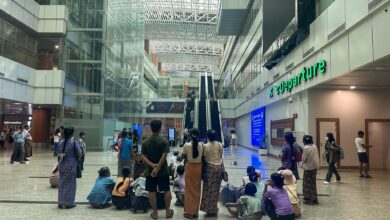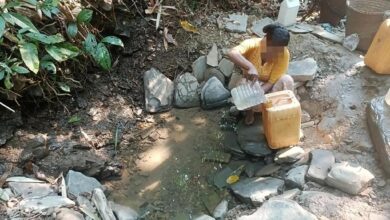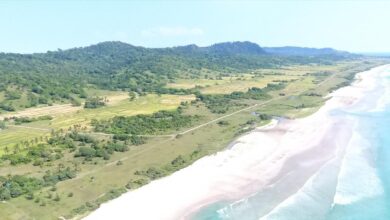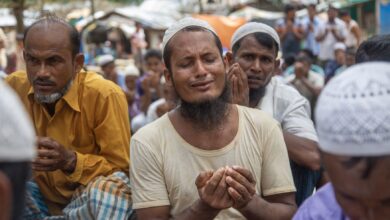
Thura was trying to recover the body of a friend who had been shot in the head when he, too, came under fire from regime forces during a protest in Yangon’s North Okkalapa Township on March 3.
The 23-year-old had been a regular participant in protests at North Okkalapa’s Kanthaya Park, but on the day he was shot, a crackdown dispersed the crowd that had gathered there. Rather than simply give up and go home, however, he and some friends decided to march to another protest site at the township’s Circular Junction.
They went because they wanted to support students who had come under attack at the junction. They knew that they were walking into an extremely dangerous situation, but somehow it no longer seemed to matter.
When his friend was shot and killed, he became even more reckless, he recalled.
“In the past, I didn’t think I would ever dare go into an area where bullets were flying. I was just too scared. But the crackdown made my blood boil, so I wasn’t afraid anymore. I just wanted to get my friend’s body and return it to his family,” he told Myanmar Now.
On a day that saw a total of 38 civilians killed by the regime around the country, North Okkalapa alone accounted for 10 of them. But a far greater number were injured, many of them seriously. Thura was one of 79 who were wounded in the township on the day that he permanently lost his eyesight.
A bullet fired by a soldier from the military’s notorious Light Infantry Division 77 took out his left eye, but blinded him in the right as well.
His first thought, he said, was how the news would affect his mother, who suffers from heart disease.
“I was afraid that my mom would be very sad,” he said.

‘Ready to do anything’
Thura, who dropped out of school after completing the eighth grade to help support his family, lives in a household of eight people. Their home is in North Dagon Myothit, one of the “new townships” created by the former regime a year after it seized power in 1988.
Since he was shot, he has been receiving treatment for his injuries at home. To help him pass the time, family members read the news to him so that he can follow the progress of the movement against the current junta.
Despite losing his vision, he said that he would willingly do anything he could to bring down the regime.
As a “defence-line protester”, Thura was armed with no more than a makeshift shield that he used to slow down rampaging soldiers so that fellow protesters could escape. Now, however, he is prepared to go to extremes to fight back.
“Do I have to strap explosives to my body and blow myself up in a crowd of soldiers? If I can, I will. If there is anything I can do, I’m ready to do it,” he said.

Like many others who have fallen victim to the regime’s ruthless efforts to terrorize the public into submission, however, Thura’s immediate concerns are more personal.
He is still worried about his bedridden mother, from whom he has managed to hide his own condition. “I don’t want to make her heart disease worse,” he said, explaining why he hasn’t let his mother know what happened to him.
He also acknowledged that his situation has added to his family’s hardships at a time when the collapse of the economy since the coup has put enormous pressure on the poor.
But even the loss of one of the family’s breadwinners has done little to dampen their conviction that no sacrifice is too great to resist the junta’s rule.
“Despite this incident, no one in my family has spoken a word of regret,” he said.
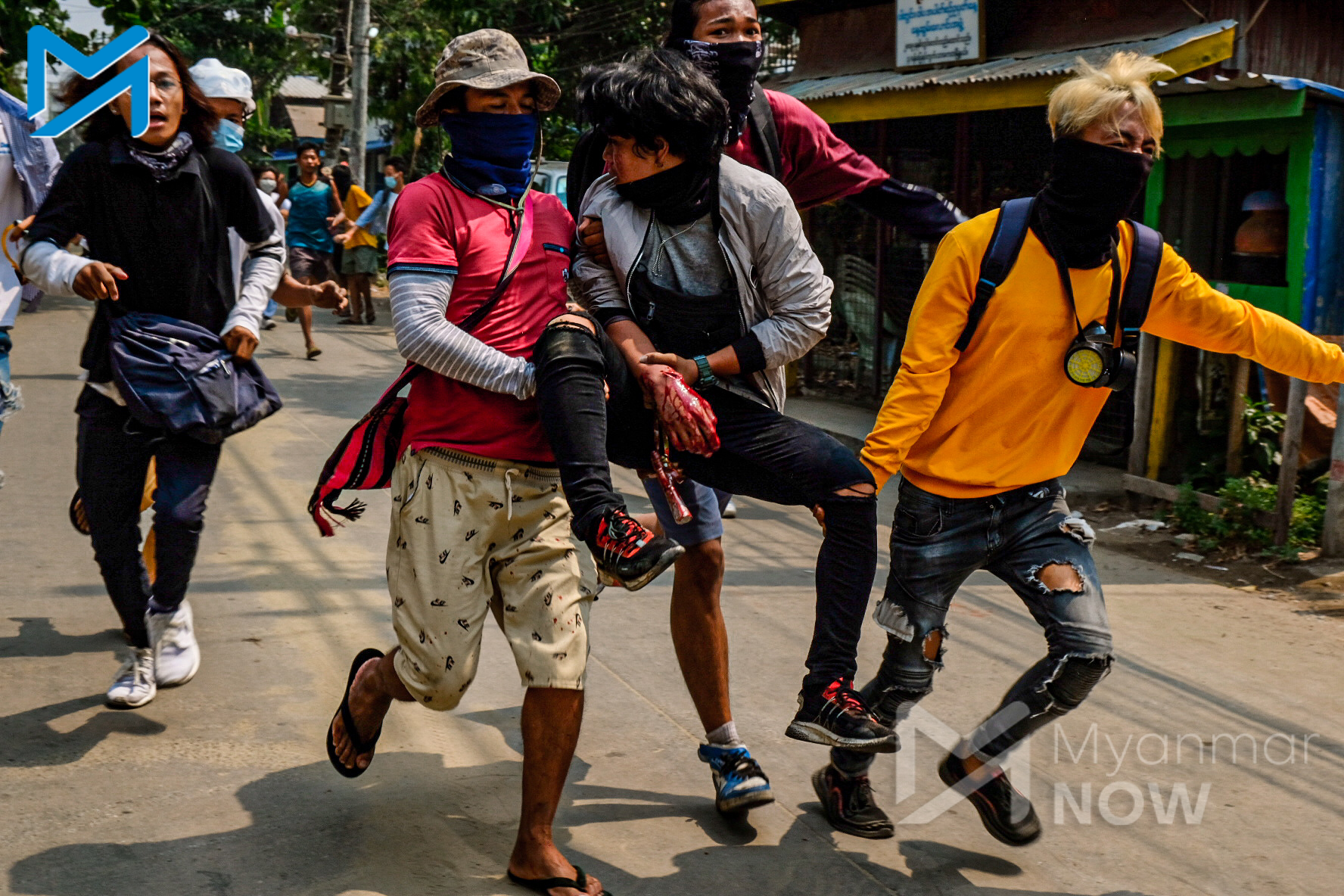
Fighting for the future
A week after Thura lost his eyesight in North Okkalapa, 24-year-old San Lin was shot while protesting in South Dagon. Two days later, after being admitted to Mingaladon Military Hospital, he lost half of his left leg.
He spent 10 days in the hospital, and was due to return again five days later to have the dressing on his wound changed when the regime’s forces went on a killing spree.
His appointment was on March 27—a day marked by the military as Armed Forces Day, but by the rest of the country as Anti-Fascist Resistance Day. It was the worst day of killing since the coup. Over 100 civilians were murdered on that day alone, and countless others were wounded.
San Lin said he felt he had to fight for the sake of his three-year-old son’s future. “We received a poor education when the military was in power before. I don’t want my son to have a similar fate,” he said.
He said he believed that the Spring Revolution, as the anti-coup uprising has been called, would eventually succeed, but it would take time.
“Our movement must win. We will fight until we win,” he said.
As for his own role, he said that even if he can no long join his fellow protesters on the front lines, he will still find a way to support their efforts.
“I will continue participating in this movement in any way I can. In the beginning, I was a frontline protester. I can’t be on the front line anymore, but I will stay in the movement,” he said.
While his son’s future remains his primary motivation for continuing with the struggle, he said he now also feels an obligation to honour those who have made the ultimate sacrifice.
“If we fight until we win, our brothers and sisters who gave their lives will be content in the afterlife. All people who are fighting for democracy at this time are brothers and sisters,” he said.
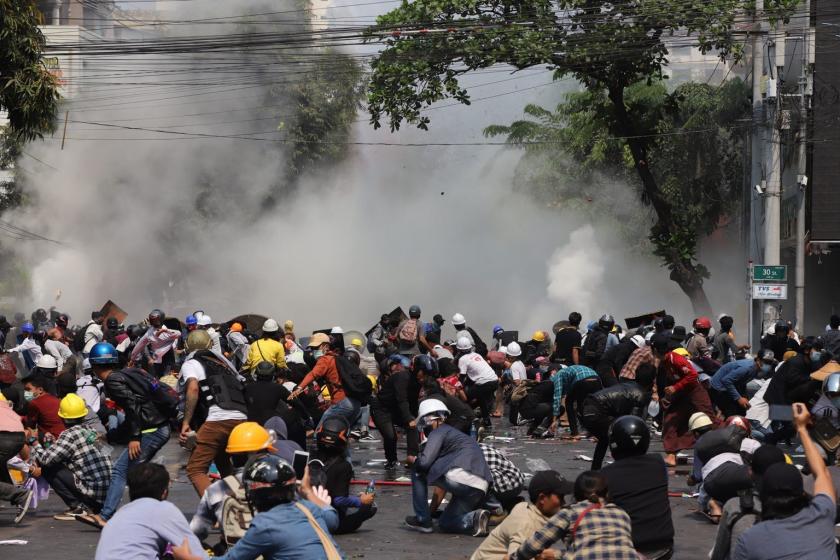
‘We will win!’
The first reaction most people have when they learn that a family member has survived a deadly crackdown is relief, according to doctor in Mandalay who has treated many such patients.
But when they learn that their loved ones will never be the same after suffering often grisly injuries at the hands of soldiers armed with high-powered weapons, they realize that their suffering has just begun.
“They just have to accept that whatever the patient’s condition, they can still see them alive and live together with them,” said the doctor.
“It’s a sad thing,” he continued, noting that many of the victims are low-paid casual workers who struggled to make ends meet even when they were healthy.
“In the future, there should be long-term projects established to support people with such disabilities,” he added.
This is the grim reality that now faces thousands of people around the country who may never fully recover from injuries inflicted on them by the ruling junta.
According to those who work to assist these victims of the regime’s assaults on unarmed civilians, many are unwilling to speak about their injuries to others.
Myanmar Now spoke to one young man who was shot in Mandalay, but he said he was not ready to talk about his injuries, which have left him without the use of his limbs.
One of the most notorious incidents was the shooting of Hlyan Phyo Aung, a 22-year-old civil-engineering student from Magway. In a particularly sadistic attack, soldiers shot both of his hands at close range, completely severing the right hand and leaving the left severely damaged.
He was saved by fellow protesters, but not before the soldiers shot him repeatedly in both legs, leaving him with injuries that could require amputation.
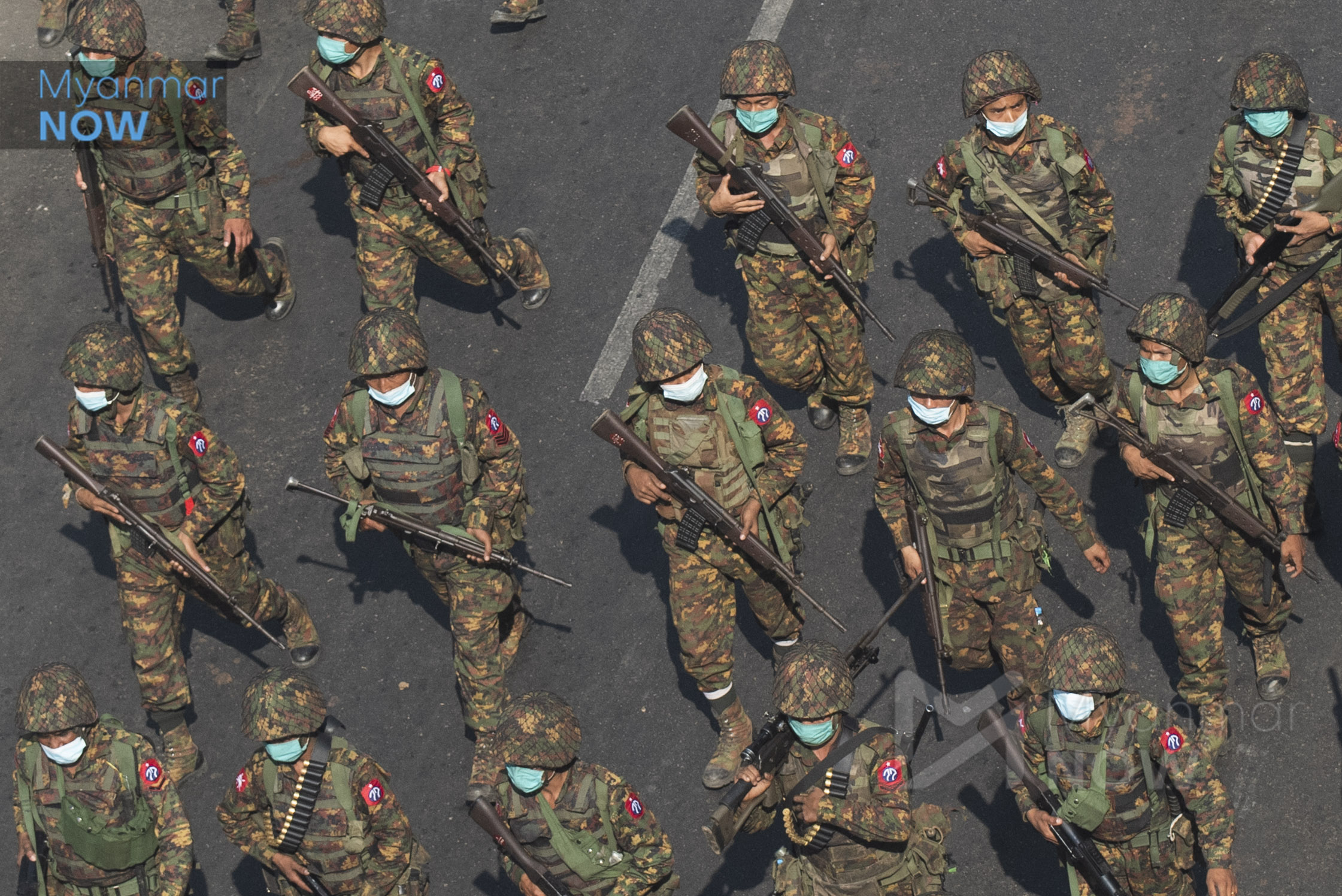
That attack took place on March 27, the day that the regime unleashed an orgy of violence on the country that put its utter contempt for human life on full display.
The following day, near the Thiri Myaing railway station in Yangon’s Hlaing Township, another young protester also lost his hand after he tried to throw a hand grenade that had been lobbed at a group of protesters away from them.
In a scene that was captured on video and widely shared on social media, the man is then seen getting into a cycle-rickshaw as blood dripped from his handless wrist.
At that moment, he shouted the words that continue to sustain many others like him: “We will win!”
